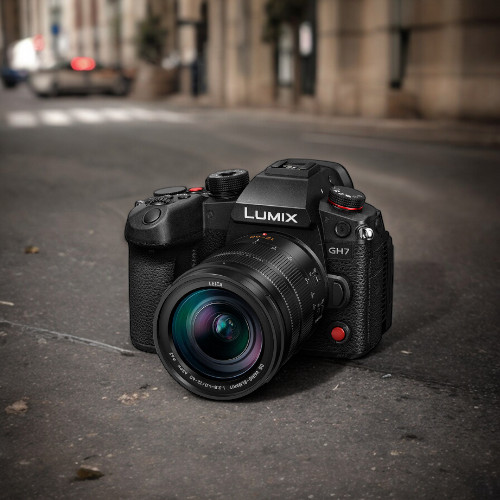
Comparing the Panasonic GH6 and GH7: A Comprehensive Look at Specifications
When it comes to mirrorless cameras, Panasonic’s GH series has been a long-standing favorite among both videographers and photographers. The GH6 and GH7, being the latest entries in this lineage, promise to offer advanced features that cater to both enthusiasts and professionals. In this blog post, we’ll dive into a detailed comparison of their specifications to help you choose the right model for your needs.
### **1. Sensor and Image Quality**
**GH6:**
– **Sensor Type:** Micro Four Thirds (MFT) sensor
– **Resolution:** 25.2 MP Live MOS sensor
– **ISO Range:** 100-25600 (expandable)
– **Image Processor:** Venus Engine
**GH7:**
– **Sensor Type:** Micro Four Thirds (MFT) sensor
– **Resolution:** 26.1 MP Live MOS sensor
– **ISO Range:** 100-51200 (expandable)
– **Image Processor:** Dual Venus Engine
**Comparison:**
Both cameras utilize a Micro Four Thirds sensor, but the GH7 features a slightly higher resolution at 26.1 MP compared to the GH6’s 25.2 MP. The GH7 also has a broader ISO range, which can be beneficial in low-light conditions. Additionally, the GH7’s use of dual Venus Engines suggests improved image processing capabilities, potentially resulting in better overall image quality and performance.
### **2. Autofocus and Performance**
**GH6:**
– **Autofocus System:** DFD (Depth From Defocus) technology
– **Focus Points:** 225
– **Continuous Shooting Speed:** 12 fps (electronic shutter), 9 fps (mechanical shutter)
**GH7:**
– **Autofocus System:** Advanced Hybrid AF with DFD and phase detection
– **Focus Points:** 315
– **Continuous Shooting Speed:** 14 fps (electronic shutter), 12 fps (mechanical shutter)
**Comparison:**
The GH7 improves upon the GH6’s autofocus system by integrating phase detection alongside DFD technology, which can result in faster and more accurate focusing. The GH7 also boasts more focus points and a higher continuous shooting speed, making it a better option for fast-moving subjects and high-speed photography.
### **3. Video Capabilities**
**GH6:**
– **4K Video Recording:** Up to 60p (4:2:2 10-bit internal)
– **6K Video Recording:** Up to 30p (4:2:2 10-bit internal)
– **V-LogL:** Yes
– **Frame Rate Options:** Slow motion recording up to 240 fps in Full HD
**GH7:**
– **4K Video Recording:** Up to 120p (4:2:2 10-bit internal)
– **6K Video Recording:** Up to 60p (4:2:2 10-bit internal)
– **V-LogL:** Yes
– **Frame Rate Options:** Slow motion recording up to 480 fps in Full HD
**Comparison:**
Both models offer impressive video capabilities, but the GH7 extends these features with higher frame rates for 4K and Full HD recording. If high-resolution video and ultra-slow-motion capabilities are crucial for your work, the GH7’s enhanced video specs will be a significant advantage.
### **4. Build and Design**
**GH6:**
– **Body Material:** Magnesium alloy
– **Screen:** 3.0-inch, 1.84M-dot vari-angle touchscreen
– **Viewfinder:** 5.76M-dot OLED electronic viewfinder
– **Weather Sealing:** Yes
**GH7:**
– **Body Material:** Magnesium alloy with improved ergonomics
– **Screen:** 3.2-inch, 2.33M-dot vari-angle touchscreen
– **Viewfinder:** 5.76M-dot OLED electronic viewfinder with enhanced refresh rate
– **Weather Sealing:** Yes, with additional protection
**Comparison:**
The GH7 builds on the GH6’s robust design with an enhanced touchscreen and improved ergonomics. The screen size and resolution are slightly better, which can offer a more detailed and user-friendly interface. The viewfinder in the GH7 also benefits from an improved refresh rate, which can be crucial for capturing fast-moving scenes.
### **5. Connectivity and Storage**
**GH6:**
– **Storage:** Dual SD card slots (UHS-II)
– **Connectivity:** HDMI, USB 3.1, 3.5mm audio in/out, Ethernet, Wi-Fi, Bluetooth
**GH7:**
– **Storage:** Dual SD card slots (UHS-II) with additional CFexpress Type B support
– **Connectivity:** HDMI, USB 3.2, 3.5mm audio in/out, Ethernet, Wi-Fi 6, Bluetooth
**Comparison:**
The GH7’s addition of CFexpress Type B support offers faster write speeds and greater storage flexibility, which is beneficial for high-resolution video recording and continuous shooting. The GH7 also features Wi-Fi 6, providing faster wireless connectivity compared to the GH6.
### **6. Battery Life**
**GH6:**
– **Battery:** DMW-BLK22, approx. 410 shots (CIPA)
**GH7:**
– **Battery:** DMW-BLK22, approx. 500 shots (CIPA)
**Comparison:**
The GH7 offers improved battery life, allowing for more shooting time between charges. This enhancement can be particularly advantageous for extended shooting sessions or on-location work.
### **Conclusion**
Both the Panasonic GH6 and GH7 are powerful mirrorless cameras that cater to high-end photography and videography needs. The GH7 offers several enhancements over the GH6, including a higher-resolution sensor, faster autofocus, improved video capabilities, and better battery life. However, the GH6 remains a robust and capable option, especially if your needs don’t require the latest advancements in video recording or autofocus speed.
Ultimately, your choice between the GH6 and GH7 will depend on your specific requirements and budget. If you need cutting-edge features and are willing to invest in the latest technology, the GH7 is likely the better choice. For those who can do without the absolute latest advancements, the GH6 remains a strong contender in the Panasonic GH series.
Preorder or view the specs of the Panasonic GH7 at B&H Photo